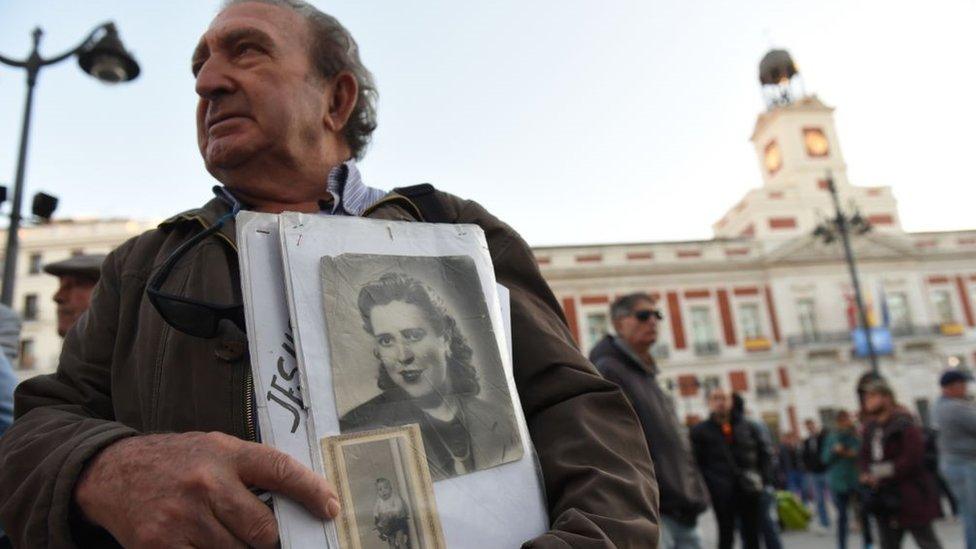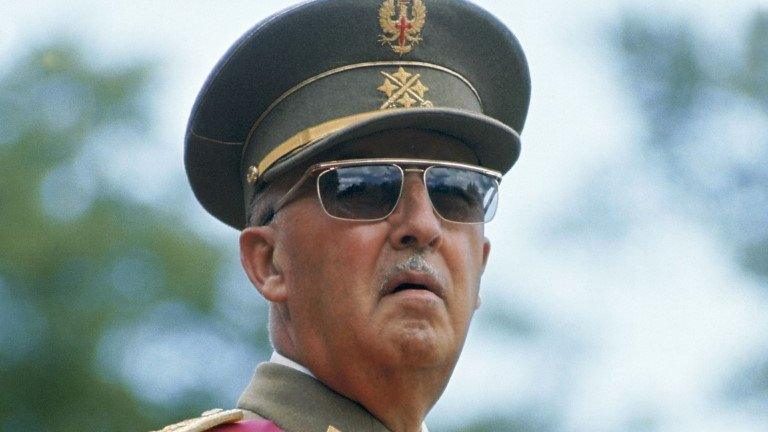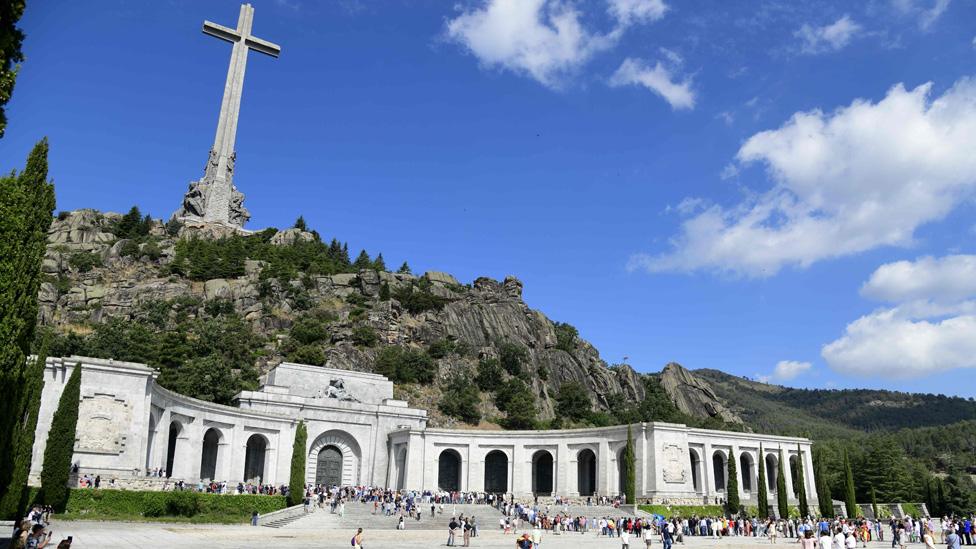Franco: Spain seeks to transform monument into civilian cemetery
- Published

The Valley of the Fallen houses more than 30,000 dead
The Spanish government plans to turn a monument to fascist dictator General Francisco Franco into a cemetery for people who died on both sides of the Spanish Civil War.
The removal of the monument is part of proposals aimed at redressing the wrongs of the late dictator.
The left-wing coalition government wants victims - now buried in unmarked graves - to be identified.
Franco ruled Spain from 1939 until his death in 1975.
He was buried in a vast mausoleum called the Valley of the Fallen, just outside Madrid. His remains were moved to a low-key grave last year, 44 years after his elaborate funeral.
"The more than 30,000 victims of both sides will have peace and respect from all there," Deputy Prime Minister Carmen Calvo said.
The Law on Democratic Memory, proposed by Socialist Prime Minister Pedro Sanchez last week, will also prevent publicly funded groups from glorifying Franco.
It will seek to overturn sentences from political trials under Franco and will strip people of titles granted by the dictator.
The draft could still be amended over the coming months and the law requires parliamentary approval.

A man holds a picture of a woman who went missing under Franco
The Valley of the Fallen houses more than 30,000 dead from both sides of the 1936-39 Spanish Civil War, in which Franco's Nationalist forces defeated the Republican government.
It was partly built by political prisoners, whom Franco's regime subjected to forced labour.
The site has been a focal point for Franco supporters and a shrine for the far right.
How has Spain dealt with the Franco era?
Unlike in Mussolini's Italy and Nazi Germany, defeated in World War Two, Spain's transition to democracy in 1975 was more gradual.
Though democracy is well established now, many believe the country has never faced up to its fascist past. There was an unwritten "pact of forgetting" during the transition.
Franco's coffin was removed from the mausoleum last year
An Amnesty Law adopted in 1977 prevents any criminal investigation into the Franco years. Statues of Franco were removed and many streets were renamed.
A Historical Memory Law, passed in 2007 by the socialist government at the time, recognised the war victims on both sides and provided some help for surviving victims of Franco's dictatorship and their families.
But the work to locate and rebury thousands of civil war dead has been slow and controversial.
More than 100,000 victims of the conflict, and the repression carried out afterwards, are still missing.
Why Spain wanted to exhume Franco's remains
- Published24 September 2019

- Published17 July 2016

- Published24 August 2018
